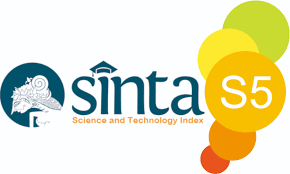Implementing Recommendation Application Service Information Systems for Candidate Workers Needs in the Covid-19 Pandemic
DOI:
https://doi.org/10.34010/injuratech.v4i1.13914Keywords:
Application Service, Information System, Candidate Workers NeedAbstract
Every fresh graduate will need and find a job. However, it isn't easy to get a job, especially when workers are mostly done online. Thus, prospective workers need a variety of tools to assist them in their work, such as applications used for works. Therefore, this case aims to create a web-based information system to help their work. It is expected to improve the soft skills and productivity of workers. The results of the application recommendation information are obtained from the survey form in which all questions are related to the needs of the website users of the application. The information is then directly processed by the web system, and the output will get application recommendations along with usage information, info features, and platforms that can be used. The method used in this study includes the analysis phase starting from gathering information and making ideas, followed by making preliminary designs to making prototypes, testing, and evaluating implementation. Based on the testing results, the recommendation can help prospective workers increase knowledge about the right application to be used on the work to be done and prevent the use of less efficiency. This research concludes that with the help of recommendation, application services can help prevent workers from using applications that are less efficient for their work and increase soft skills and productivity.
References
[2] Alhendawi, K. M., & Baharudin, A. S. (2013). The Effects of Quality Factors of Web-Based Information System on the Employee Contextual Performance. Journal of Theoretical & Applied Information Technology, 52(3), 236-242.
[3] Alhendawi, K. M., & Baharudin, A. S. (2014). The impact of interaction quality factors on the effectiveness of Web-based information system: the mediating role of user satisfaction. Cognition, technology & work, 16, 451-465.
[4] Anggraeni, S., Maulidina, A., Dewi, M. W., Rahmadianti, S., Rizky, Y. P. C., Arinalhaq, Z. F., Usdiyana, D., Nandiyanto, A.B.D., & Al-Obaidi, A. S. M. 2020. The deployment of drones in sending drugs and patient blood samples COVID-19. Indonesian Journal of Science and Technology, 5(2), 193-200.
[5] Choy, L. T. (2014). The strengths and weaknesses of research methodology: Comparison and complimentary between qualitative and quantitative approaches. IOSR journal of humanities and social science, 19(4), 99-104.
[6] Fitri, E., Ifdil, I., & Neviyarni, S. (2016). Efektivitas layanan informasi dengan menggunakan metode blended learning untuk meningkatkan motivasi belajar. Jurnal Psikologi Pendidikan dan Konseling: Jurnal Kajian Psikologi Pendidikan dan Bimbingan Konseling, 2(2), 84-92.
[7] Hair, J., Hollingsworth, C. L., Randolph, A. B., & Chong, A. Y. L. (2017). An updated and expanded assessment of PLS-SEM in information systems research. Industrial management & data systems, 117(3), 442-458.
[8] Handayani, T., Widianingsih, I., Julianti, S., & Pebriani, D. N. (2021). Web-based micro small and medium enterprises product brand development. International Journal of Entrepreneurship & Technopreneur (INJETECH), 1, 11-16.
[9] Luo, M. M., & Remus, W. (2014). Uses and gratifications and acceptance of Web-based information services: An integrated model. Computers in Human Behavior, 38, 281-295.
[10] Nguyen, P. D., Dang, C. X., & Nguyen, L. D. (2015). Would better earning, work environment, and promotion opportunities increase employee performance? An investigation in state and other sectors in Vietnam. Public Organization Review, 15, 565-579.
[11] Pop, D. P., & Altar, A. (2014). Designing an MVC model for rapid web application development. Procedia Engineering, 69, 1172-1179.
[12] Soegoto, D. S., & Oktady, D. A. (2018, August). Information System Design of an Inventory Online Website. In IOP Conference Series: Materials Science and Engineering (Vol. 407, No. 1, p. 012025). IOP Publishing.











